Cumbungi
Back | Salinity Indicator Plants Home | Common name home | Scientific name home | Photo Gallery | Glossary
| Photos for Cumbungi |
| Scientific Name: | Typha spp. | 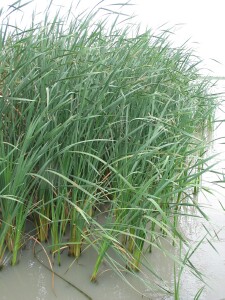 Cumbungi stand Photo: A J Brown | |||||||||||
Other Common Names: | Bulrush, Reed-mace, Cat’s-tail, Gumbung | ||||||||||||
Status: | Two species (T. domingensis – Narrowleaf Cumbungi and T. orientalis – Broadleaf Cumbungi) native to all Australia states; the former also found in South Africa and South-east Asia and the latter also found in Malesia and New Zealand. One species (T. latifolia – Lesser Reed-mace) introduced from temperate Northern Hemisphere. | ||||||||||||
Plant Description: | Tall, rigid, perennial, rhizomatous reeds with flat and strap-like leaves from 100 to 200 cm long. The flowering stem is tipped with a cylindrical (10-30 mm diameter), brown fluffy spike of densely packed flowers; the male flowers being in the upper part and separated by a small gap (up to 60 mm) from the lower female flowers. Fruit is a capsule (containing a single seed) that breaks off with the stigma and a short hairy pedicel (flower stalk). As each spike matures, it can shed up to 222,000 seeds, Flowering spring to summer. Key to Cumbungi species:
| ||||||||||||
Habitat: | The native species are common (often coexistent) on the edges of lakes, billabongs, swamps, river banks and lagoons across most of Victoria except for the Mallee and Alps. Typha latifolia was originally planted around dams but has spread to slow-moving streams, lakes and swamps near Melbourne and in West Gippsland and is occasionally found in Northern irrigation channels. Although commonly found in freshwater environments, Cumbungi is tolerant of some salinity as well as permanent waterlogging.
| ||||||||||||
Comments: | Once considered to be indistinguishable from the Northern Hemisphere Typha angustifolia, May be confused with Common Reed from a distance as it grows in similar environments, although it cannot tolerant the same level of salinity. Cumbungi can be a weed in irrigation channels, impeding water flow and increasing sedimentation rate and in fact, for this reason, it has been successfully used as a biological means of cleaning water of excessive nutrients, heavy metals and other contaminants. It also provides protection against stream bank erosion and nesting sites for water birds. The roots were used by Aboriginals as flour but needed to be treated carefully as they contain toxic elements. Leaves were also used for weaving. | ||||||||||||
Photos for Cumbungi
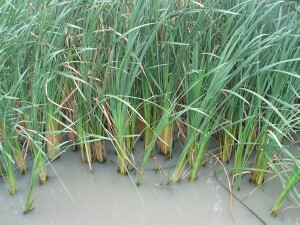 Cumbungi plants Photo: A J Brown | 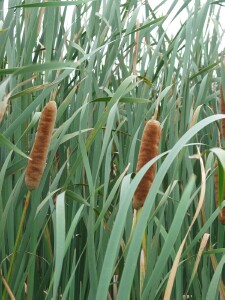 Cumbungi flower spikes Photo: A J Brown |
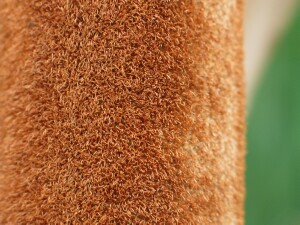 Close-up of Cumbungi flower spike Photo: A J Brown | 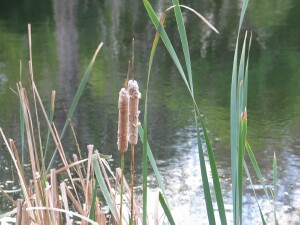 Mature Cumbungi spike shedding seed Photo: A J Brown |
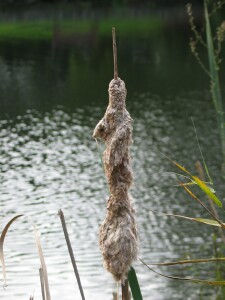 Old Cumbungi flower spike Photo: A J Brown |


